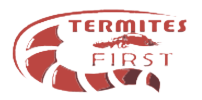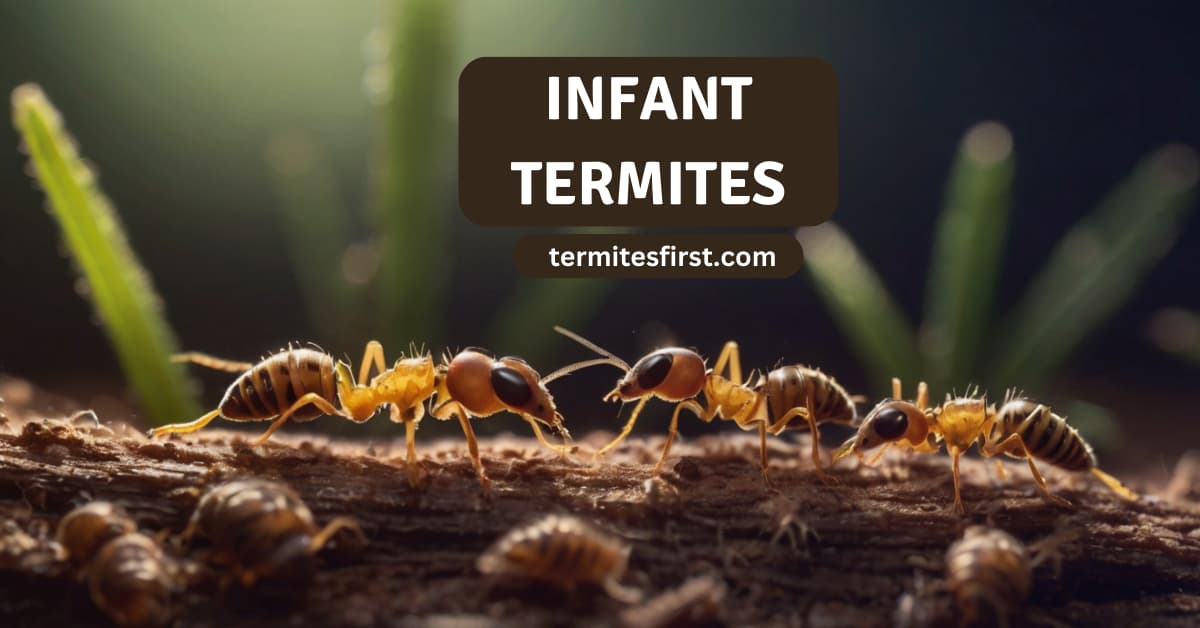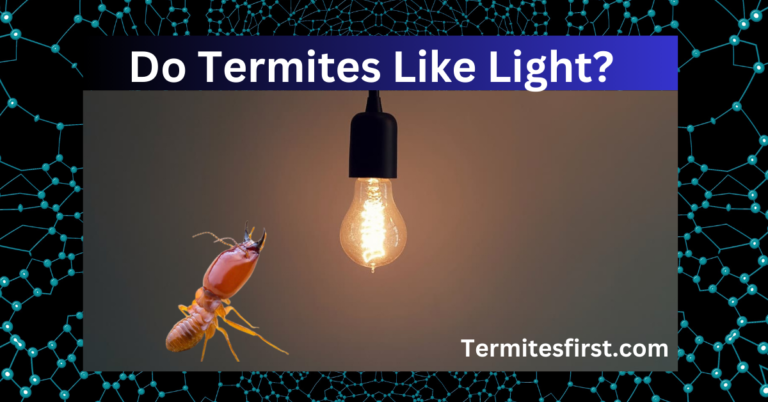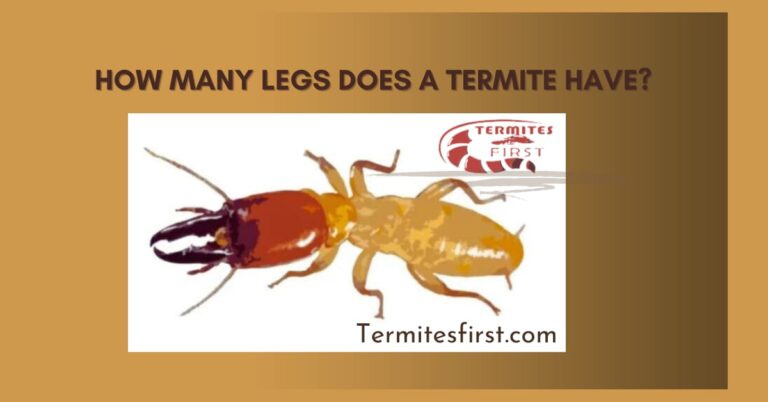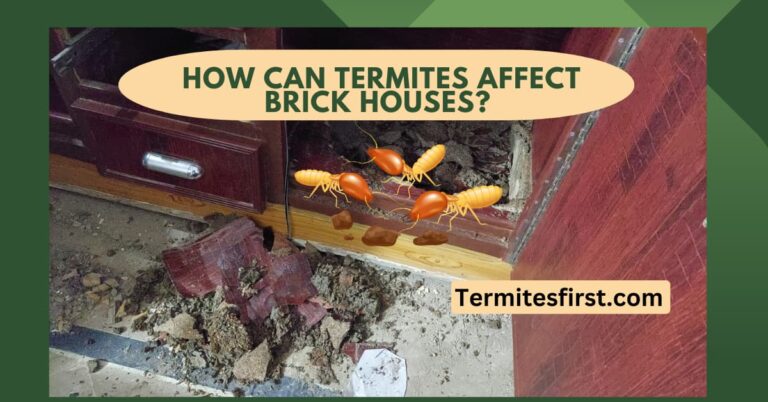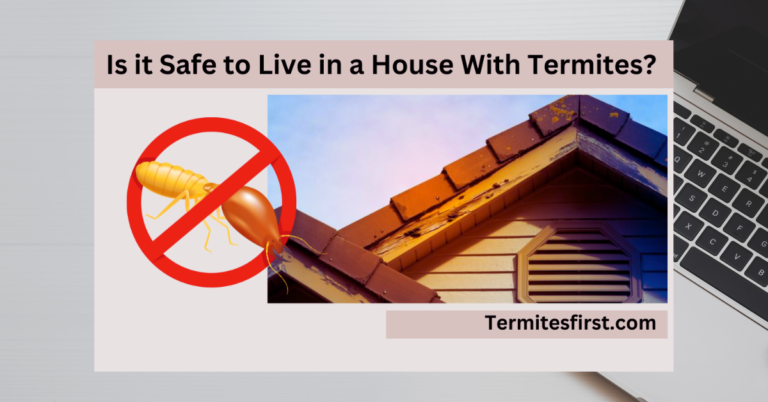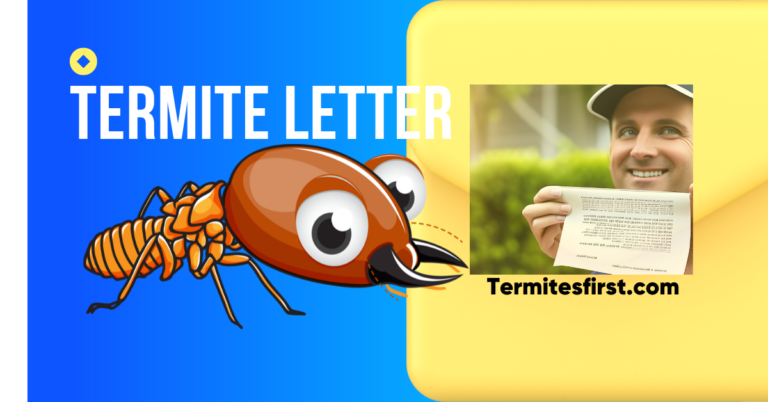Infant Termites: What They Are and How to Prevent Infestations
Nymphs, or infant termites, contribute to the colony’s overall development and expansion, making them vital to the colony’s longevity. These immature young pests molt many times, maturing through the stages of their life cycle.
The management of this process requires complex biological changes, as nymphs take over important colony tasks such as feeding other members and maintaining the nest. Watching these early stages provides a window into the life cycle of termites, highlighting their importance in the balance of our ecosystems.
Learning about nymph development helps us learn to admire the social structures termites have, and their role in the environment.
Main Insights
- Infant termites, or larvae, are key to realizing how termite colonies work. They then grow into workers, soldiers, and other forms, which makes them particularly important for successful IPM.
- In order to spot infant termites before they cause damage and invade, you need to know what to look for. These features are their small size, creamy white color, and absence of wings.
- Knowing how to distinguish ants from termites can be critical. For one thing, infant termites don’t have that pinched waist and they behave and grow differently than their ant counterparts, helping you to identify the pest correctly.
- Knowledge of the termite life cycle, from eggs to adults, helps in developing strategic pest control measures, as different stages have varying vulnerabilities.
- New baby termites are indispensable to their colony. They assist with feeding, and worker termites communicate through pheromones and, in turn, keep the colony organized and healthy.
- Preventing termites is all about routine. Regular inspections and moisture control are key to termite prevention. Sealing all potential entry points is equally important in stopping infestations before they start.
What Are Infant Termites?
Infant termites, which are more commonly known as larvae, make up the younger form of the termite lifecycle. These small termites play a big part in creating a strong, prosperous colony. During this early developmental stage, as they age, they undergo metamorphosis into various castes.
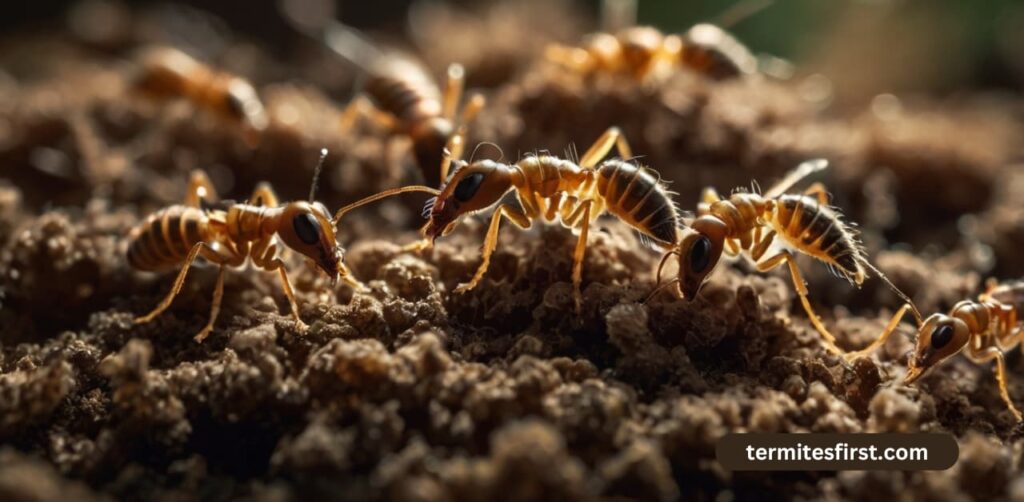
Infant soldiers and workers take shape, and both are essential in keeping the colony healthy and growing. Identifying the traits of these larvae is key for anyone working in pest management. This information in turn allows them to proactively address infestations before they develop into more serious concerns.
1. Physical Appearance of Young Termites
Young termites are easily identifiable by their much smaller, softer bodies and creamy white color. They usually are only a few millimeters long, about the size of a rice grain. This tiny size makes them nearly undetectable at first sight.
While they can be quite tiny, infant termites have the exact same body design as grown-up termites. At this point, they have not developed wings yet. They do possess mandibles, just not as fully formed as those of adult termites.
This allows them to feed and help play an active role in the colony’s development. These physical characteristics are crucial for early identification, as spotting them can help you avoid serious destruction from uncontrolled invasions.
2. Distinctive Features of Baby Termites
One of the most important characteristics that distinguishes baby termites from other insects is their shape. Unlike ants, infant termites lack a pinched waist. Their translucent bodies help with identification too, as this feature isn’t common in many other pests.
Unlike adult termites, infant termites don’t have wings, which makes them more difficult to identify. Knowing these unique characteristics are important for early prevention. Having this information allows us to implement effective preventative measures to manage and eliminate termite infestations before they inflict costly damages.
3. Differences Between Ants and Termites
Knowing how to tell termites and ants apart is essential for homeowners and pest control professionals alike. A major visual difference is that termites do not have the pinched waist appearance that ants do.
Behaviorally, termites and ants differ significantly. Termites work in a more unified social structure, focusing on colony expansion and resource gathering. Size-wise, termites are usually larger than ants, although the difference can be hard to see in the beginning stages.
Understanding these distinctions can be key in detecting and treating termite issues before they lead to serious damage.
Life Cycle of Termites
Having a good understanding of the life cycle of termites is important. It’s an important part of understanding their life cycle and the difficulty of controlling these pests. Termite life starts with the laying of the eggs by the queen, a process that becomes more and more prolific as she grows older.
Initially, the colony grows at a slow rate. Once the queen expands her egg-laying capabilities, the colony can swell to impressive figures, sometimes numbering in the millions of termites. Identifying patterns of growth is key to successful pest management. This helps us develop more focused approaches to effectively control infestations.
Termite Development Stages
The life cycle of a termite consists of four specific stages. As with many insects, it starts with the egg stage, followed by larvae, then nymphs, and lastly adults. Each stage of life serves an important function in the colony.
Nymphs are highly adaptable. They can turn into different castes such as worker, soldier, or reproductive termites depending on what the colony requires. Their ability to respond to change is key to their colony’s survival and growth.
In these instars, termites experience dozens of moltings, a natural biological process that is essential for their growth. Molting allows the termite to grow by cracking open and shedding its exoskeleton. This molting process occurs numerous times before the termite reaches full maturity.
This is because development time can vary widely between different species. Environmental factors, including temperature and the availability of food, are key players in this process. Subterranean termites, for example, can create colonies numbering in the millions. Under ideal conditions, it can still take them upwards of 3 months to completely mature.
Growth Process of Baby Termites
The life cycle of a termite begins when the eggs are laid. It is through this process that new termites, or larvae, are introduced into the colony. These larvae are white, soft-bodied, flimsy, pale-colored insects that develop gradually through various instars to become adult termites.
Each molt is an equally important juncture, passing through enabling them to expand and grow and metamorphasize. The duration of the growth process is affected by many factors, including the abundance of food sources and external environmental factors.
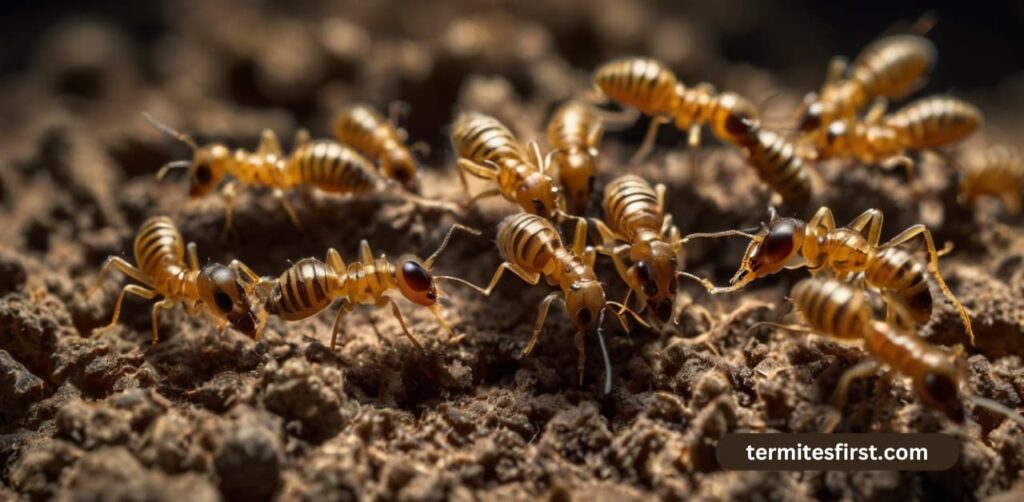
With a constant source of food and optimal conditions, they develop quickly. This has implications on how fast a colony can grow and succeed. Worker termites account for 90 to 98% of the colony. They are important from a biological standpoint, by providing food for the colony while keeping the nest clean.
This cycle of termite development is extremely important to the overall health and longevity of the colony. A robust colony can last for many decades, with some well-documented examples living for close to 100 years. Understanding the importance of these instars can lead to more effective pest management strategies, helping to make treatments more proactive and focused.
Behavior of Baby Termites
Baby termites—nymphs—exhibit fascinating behaviors that are central to the colony’s overall life cycle. They are highly social, generally living in clusters of a dozen or more, protected from threat in the colony’s complex threadwork.
In this protected environment, these young termites gradually grow into one of three distinct castes: workers, soldiers, or reproductive termites, each caste with its own function. Molting propels their maturation into these functions. It’s a remarkable metamorphosis that occurs several times during their lifecycle.
Although they serve an important purpose in their colonies, baby termites are hard to detect. Their subtle small size and similarities to other insects, most notably in their larval or nymph stages, can make them difficult to spot.
Feeding Patterns and Diet
Cellulose is the primary component of a baby termite’s diet. They mainly obtain it from wood, plant materials, and other cellulose sources including paper products. They consume these materials, contributing significantly to the ecosystem through decomposition.
This natural process helps with nutrient recycling, which contributes tremendously to the overall environmental balance. Their feeding habits can quickly turn destructive to human structures. When infestations do strike, they feast on wooden house beams, floors, and other cellulose-rich building materials, often causing severe damage in the process.
A favorite place for baby termites is high humidity and moisture. They commonly swarm around locations with water sources or moist soil, creating an easier path for them to discover food. Their preference for wood from trees, dead branches, fallen logs, and even cotton fibers is a testament to their wide-ranging palate.
Nutritional Needs for Growth
For optimal development, larvae need a diet that’s high in nutritional quality. Moisture is essential for their food source and development. It provides the energy for their survival and biological functioning.
Lack of proper nutrients can forestall their development, directly affecting their capacity to carry out their tasks inside the colony. A well-rounded diet is important not just for the health of the individual, but for the health of the colony as a whole.
Immature termites develop rapidly and greatly increase the number of termites in the colony. In as little as five years, those figures can ramp up from 1,000 employees in the second year to an eye-popping 300,000.
The rapid development emphasizes the critical role of proper nutrition in supporting colony health and helping the colony live long enough to reproduce.
Identifying Termite Infestations
Being able to identify a termite infestation early can prevent your eventual frustration of having to cope with severe damage down the line. It’s fairly easy to tell if you have termites just by knowing what to look for. Once you know what to look for, these signs are pretty obvious.
One major indicator is the presence of swarmers, especially in abundance. Though discovering a few dozen Formosan swarmers may not cause you to panic, hundreds are a sign of a current infestation. The second sign is mud tubes, which can be visible on the outside of a foundation wall. These tubes may point to a new termite infestation. Or, they could just indicate that termites have been hiding for years, now suddenly becoming apparent.
For this reason, understanding termite behavior is an important factor in early detection. Because it takes years for a colony to grow large enough to create swarmers, termites are often overlooked for years. Understanding this will allow you to judge how serious an infestation is even when these bugs are visible.
The seasonal activity of the termites themselves can be indicative. For instance, native subterranean species in Mississippi start swarming as early as late February to early March, depending on location. Visual inspections are an integral part of identifying termite infestations. This is paramount in areas of Mississippi that are threatened by Formosan subterranean termites, which affect a vast area.
Common Signs of Termite Presence
Here are some warning signs to look for that suggest termites may be present. Mud tubes are a classic sign. These small, pencil-sized tubes are often seen crawling up walls or other surfaces. Discarded wings are another surefire indication, usually found around windowsills or entryways.
Damaged wood is the most obvious indicator of a termite infestation, often appearing as hollow or crumbling areas. It’s crucial to identify these signs and not confuse them with ants. Termite wings are all the same size, in contrast to ants, whose wings differ in size.
Droppings, or frass, are another major sign of an infestation. This material looks like sawdust and is usually located near the entry points of termites. Staying alert and frequently checking for these indicators can stop a small concern from turning into a large headache.
How to Detect Early Infestations
Developing a simple checklist of places to look can be a great method to identify potential termite infestations early. Pay special attention to areas such as basements, crawl spaces, and attics, as these are common hiding spots for baby termites. Keeping an eye on moisture levels in these spaces is essential since termite larvae are drawn to damp conditions.
Traps or bait stations allow you to identify the presence of active termites before they do serious damage. These devices can detect swarmers or worker termites, alerting you to the presence of the entire termite colony before extensive damage has occurred.
Homeowners need to be proactive in their approach by routinely having their property inspected and treated for effective termite control. If you think you found some shelter tubes, scrape the mud off to look for holes and watch if larval termites come out.
Cutting a small section out of a tube makes it pretty obvious if they fix it, a definite indication of activity. By remaining vigilant and educated, you can save your home from the expensive damages caused by destructive baby termites.
Preventing Termite Infestations
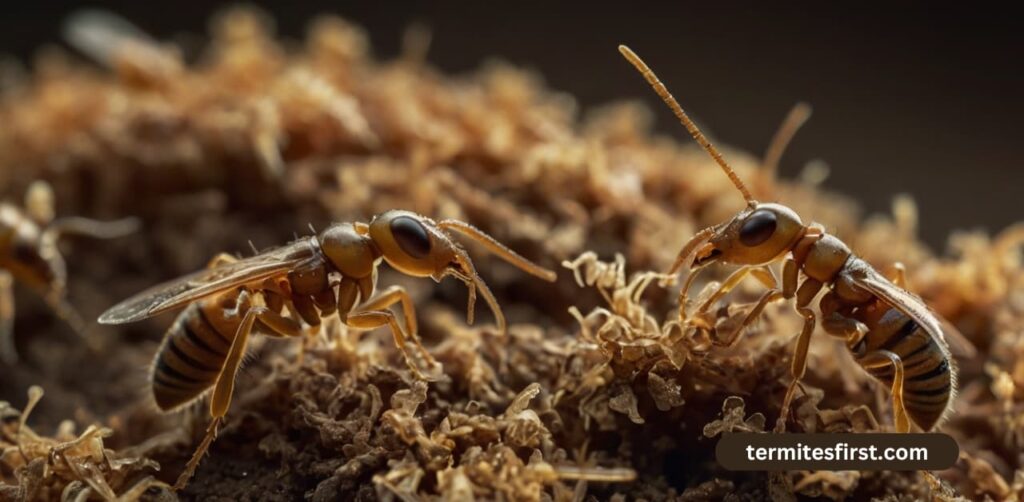
Prevention
Prevention is about establishing conditions that deter a potential termite infestation, making it highly inhospitable for these destructive baby termites. By preventing problems before they start, you’ll have more time and money to invest in other areas.
Minimizing Moisture Around Homes
Moisture control is an important aspect of preventing termites. These destructive pests require moist conditions in order to survive, so it’s vital that the soil around your home stays dry. Quality drainage systems keep water from collecting around your home’s foundation.
Keep gutters and downspouts clean and make sure they’re draining away from the home. Don’t overwater landscaping close to the foundation, and install a dehumidifier in humid locations, such as basements. A drier space is more unwelcoming to termites, making the chances of having an infestation much lower.
Eliminating Wood-to-Soil Contact
Termites are naturally attracted to wood, particularly when wood is in direct contact with soil. To prevent infestations, remove all wood-to-soil contact in and around structures. Use concrete or metal termite shields to isolate wood features such as decks and fences from the soil.
In addition, pressure-treated wood is another great alternative due to its increased resistance to termites. Remove wood debris, fallen trees, or tree branches from your property. These things can invite termites to destroy your home.
Regular Inspections
Regular termite inspections are one of the most important preventive steps you can take to avoid an infestation. Have a licensed pest control expert conduct an annual termite inspection to catch any issues before they become major infestations.
Only professionals can spot hidden infestations that are invisible to the untrained eye. Keep a watchful eye for signs of termite activity, like mud tubes on walls or floors. Record all observations to maintain a record of your home’s health over the years.
Preventing extensive damage through regular inspections will protect the value of property owners’ investments.
Securing Entry Points in Homes
Termites are likely to enter through frequent access points like cracks and crevices in the foundation, walls or floors. Locate and seal these access points to keep them from infesting your home. Use caulking or other sealants to eliminate entry points.
Keeping a barrier between soil and wood members is extremely important. Monitor frequently for new openings or vulnerabilities where termites could gain access. By making sure your home is sealed tight, you greatly limit the chances of an infestation.
Long-Term Prevention Strategies
An integrated plan for termite prevention uses physical barriers and chemical treatments. Consider physical barriers such as stainless-steel mesh to keep termites away, or chemical treatments to form a protective barrier around your house.
Regular landscaping maintenance prevents dangers by discouraging termite habitats. Educative measures teaching residents about termite attraction and habits helps them identify threats early and take action before it’s too late. A little awareness and a little preparedness go a long way in the ongoing fight against termites.
Importance of Regular Inspections
Performing termite inspections yearly is essential to identify infestations before they get out of hand. Only a professional termite inspection can tell you if there are hidden issues and offer you peace of mind.
Regular inspections are important to protect the property from structural damage and protect the overall value of the property. Homeowners should have a home inspection report to compare the property and track changes over time.
This documentation contributes to more informed decision-making down the line and provides an easy way to account for past preventative measures taken.
Home Maintenance for Termite Control
Home maintenance encompasses more than just your weekly cleaning and laundry load; it includes effective termite control measures to guard against potential termite infestations that can lead to serious structural damage. Here’s what you should do to help protect your home from these invaders.
Creating a Maintenance Task List
To prevent termite larvae from infesting your home, begin by developing a thorough home maintenance checklist. First and foremost, regularly clean your gutters to avoid moisture buildup, as this helps lessen the likelihood of creating moist environments that attract these pests.
Ensure that your drainage system effectively carries water away from your foundation, preventing pooling and stopping termites from finding a comfortable habitat. Routine maintenance, including yearly inspections for wooden structures like decks and fences, can help identify signs of damage early on.
Timely attention is crucial; vigilance and proactive home maintenance are key in the continued prevention of termite problems.
Moisture Control and Cleaning
Moisture control is key to termite prevention. In addition, excess moisture can serve as an attractive nuisance for termites. It’s important that leaks or water issues are repaired immediately to prevent creating moist habitats.
In parts of the country where high humidity is the norm, a dehumidifier will keep moisture levels in the ideal range. The importance of cleaning practices in termite control is significant. By eliminating possible food sources, such as wood debris or cellulose-rich materials, you reduce the appeal for these pests.
Inspecting and Repairing Foundations
A good foundation goes a long way in helping protect your home from termites. Check foundations regularly for cracks or crevices that may allow entry to termites. Developing a checklist for every foundation inspection could help promote more systematic evaluations, with an eye toward both identifying and repairing vulnerabilities.
A solid foundation is your first defense against a termite invasion and maintaining the strength of your home.
Sealing Windows and Doors
Windows and doors are typical entry points for termites. Proper sealing techniques like weather stripping and caulking can help seal up these possible entry points. Make sure to routinely inspect these seals to ensure their protective quality, as they can wear out.
In addition to keeping termites at bay, a well-sealed home is more energy efficient.
Landscaping Tips for Prevention
Landscaping plays a huge role in termite control. Keep mulch at least 15 inches away from your foundation, as mulch holds moisture and can lure termites. Properly pruning trees and shrubs prevents excessive moisture accumulation around your home.
Consider using termite-resistant plants in your landscaping to further discourage these hungry pests. These strategies will make your home more beautiful and more protected from dangerous infestations.
When to Seek Professional Help
Bringing in the experts at the right moment can be tremendously helpful for effective termite control. It’s an essential part of protecting your home’s value and keeping your family healthy from destructive baby termites. Knowing when their presence requires the help of a professional is key.
Recognizing Severe Infestations
Severe termite infestations typically have obvious and alarming signs. You may see or hear hollow-sounding wood, damaged floors, or even paint that is peeling and looking like water damage.
When your house starts sagging, settling, or cracking, these are all signs that something might be wrong underneath the surface. A termite infestation could lead to costly and major destruction, weakening beams and pillars, putting your home at risk.
Failure to heed these signs could result in expensive repairs and possibly serious dangers, so it’s critical to act immediately. By connecting with experienced professionals from Alta Pest Control, you can address these signs sooner rather than later. This preventative measure stops your home from suffering additional harm.
Benefits of Expert Pest Control
There are many benefits of hiring professional pest control services. Professional exterminators use unique tools and expertise that are key to providing effective termite control.
For example, they can perform large scale, detailed inspections with the use of technology such as thermal imaging to detect infestations and analyze their scope. This knowledge enables them to create customized treatment programs that get to the root of the issue.
In addition, professional intervention usually saves money in the long run. By addressing the problem from day one, technicians at Jamison Pest and Lawn can prevent further infestations. This method reduces the chances of needing to repeat the treatment.
Alta Pest Control is recognized for its meticulousness and exceptional “no call-back rate.” Their second-to-none warranties leave you worry-free. More importantly, their knowledge, skill, and focus on the bottom line have turned termite control professionals into excellent partners for efficiently solving termite troubles.
Professional assessments are crucial for effective treatment. Annual inspections by reputable services such as MightyMite can detect early signs of infestation, allowing homeowners to take preventive measures.
Regular inspections serve as a proactive step in maintaining a termite-free home. This proactive approach, combined with expert intervention, minimizes the risk of severe damage and ensures your home remains a safe haven.
The peace of mind that comes with knowing your home is protected from termites is invaluable.
Effective Pest Control Methods
Whether you are facing a termite infestation, it’s important to weigh the best effective pest control methods. The choice between DIY approaches and hiring professionals can greatly impact both the immediate and long-term success of termite management.
Below, I’ve pitted the different methods against each other to help you determine which will be most effective for you.
| Method | Approach | Pros | Cons |
| DIY | Natural repellents, barriers | Cost-effective, minimal chemicals | Limited effectiveness, labor-intensive |
| Professional | Termiticides, baiting systems | High success rate, professional expertise | Expensive, may involve chemicals |
| IPM | Integrated pest management | Eco-friendly, sustainable | Requires knowledge, ongoing effort |
DIY Techniques for Managing Termites
If you’re the do-it-yourself type, there are a number of DIY pest control options. These methods are great ways to take care of small-termite problems.
Natural repellents, such as orange oil and neem oil, work as excellent barriers. These environmentally friendly alternatives offer peace of mind by reducing the use of harmful chemicals.
Consistent monitoring and maintenance is the key to making sure these expensive initiatives stay effective. Looking for signs of infestation, like mud tubes or damaged wood, allows you to get ahead of the infestation.
Documenting your findings and actions creates a historical record that can be invaluable in tracking the success of your DIY approach.
Professional Treatment Options
When termite infestations are extreme, it is ultimately best to call in professional treatments. Products such as termiticides and baiting systems have been used extensively.
Many termiticides require a soil treatment where a barrier is formed that termites won’t be able to cross. Baiting systems, including the Sentricon Termite Colony Elimination System, rely on lowered-risk pesticides, including noviflumuron.
This approach is highly effective and greatly reduces the risk to human health. Selecting trustworthy pest control companies is imperative for secure, effective treatment and prevention of needless aggravation.
After treatment, once your infestation has been treated, continued maintenance and monitoring are key to preventing future infestations.
Choosing the Right Method
The level of an infestation is important in figuring out what the best way to get rid of them is. When it comes to the smaller problems, do-it-yourself methods can work; however, they take a commitment and continuous care.
On the other hand, professional treatments are guaranteed to provide a more thorough fare even on the most notable issues. By knowing what’s new in pest control, you’ll better equip yourself to make an informed decision.
To ensure you’re making the right decision, know what each method entails. Evaluate cost, safety, and effectiveness to make sure the chosen method fits your goals and situation.
Conclusion
While termites can be a real nuisance for homeowners, learning more about these invasive pests’ life cycle and behavior can help you combat these insects. Infant termites, small but extremely dangerous, are often the first sign of an impending infestation. Catching them early is crucial in stopping the problem before it starts. Proactive home inspection and repair help protect your home from potential hazards. Keep an eye out for indicators such as mud tubes and wood damage. Use physical barriers and safe, effective treatments to prevent them from getting through. When a situation is beyond your control, feel free to call in the professionals. Pest control professionals, for example, like those at Terminix have the experience, knowledge and tools to handle even the worst infestations. Don’t wait — save your spot today. Keep termites at bay, and keep your home safe and healthy for years to come.
Frequently Asked Questions
Newborn nymphs, or infant termites, are the first developmental stage of termites. They look just like adults, except they’re miniature versions. Depending on the needs of the colony, nymphs mature into workers, soldiers, or reproductive termites.
Signs to look for include mud tubes, shed wings, and damaged wood, which indicate an active termite colony. Hollow-sounding wood and bubbling paint are sound clues that destructive baby termites have made your home their own.
Baby termites, or larval termites, feed on cellulose and grow quickly, playing a vital role in the colony’s development and upkeep. Their contribution is essential for effective termite control and the overall growth of the entire termite colony.
To prevent potential termite infestations, keep your home as dry as possible and avoid allowing wood debris to accumulate around your property. Fill any cracks in the foundation and ensure you use wood that’s resistant to termite damage. Regular inspections can help manage termite problems effectively.
Get professional treatment as soon as you detect a potential termite infestation. Only professionals have the expertise and tools necessary for effective termite control, protecting your home from destructive baby termites.
Employ effective termite control measures such as bait systems, chemical barriers, and soil treatments to eliminate destructive baby termites from your home.
Conducting regular inspections and implementing effective termite control measures, such as controlling moisture and ensuring proper ventilation, can make a home less attractive to potential termite infestation, protecting it from destructive baby termites.
